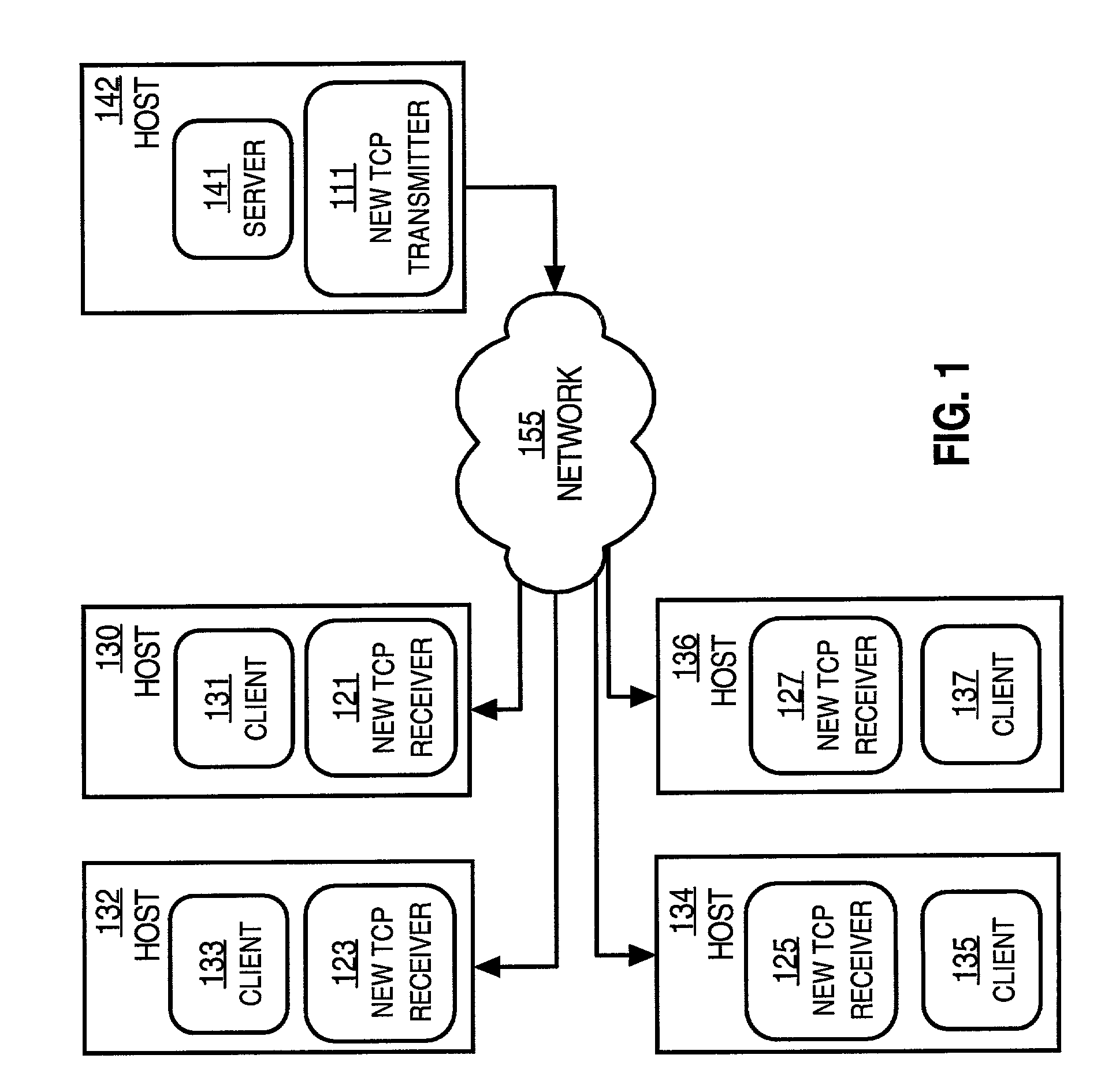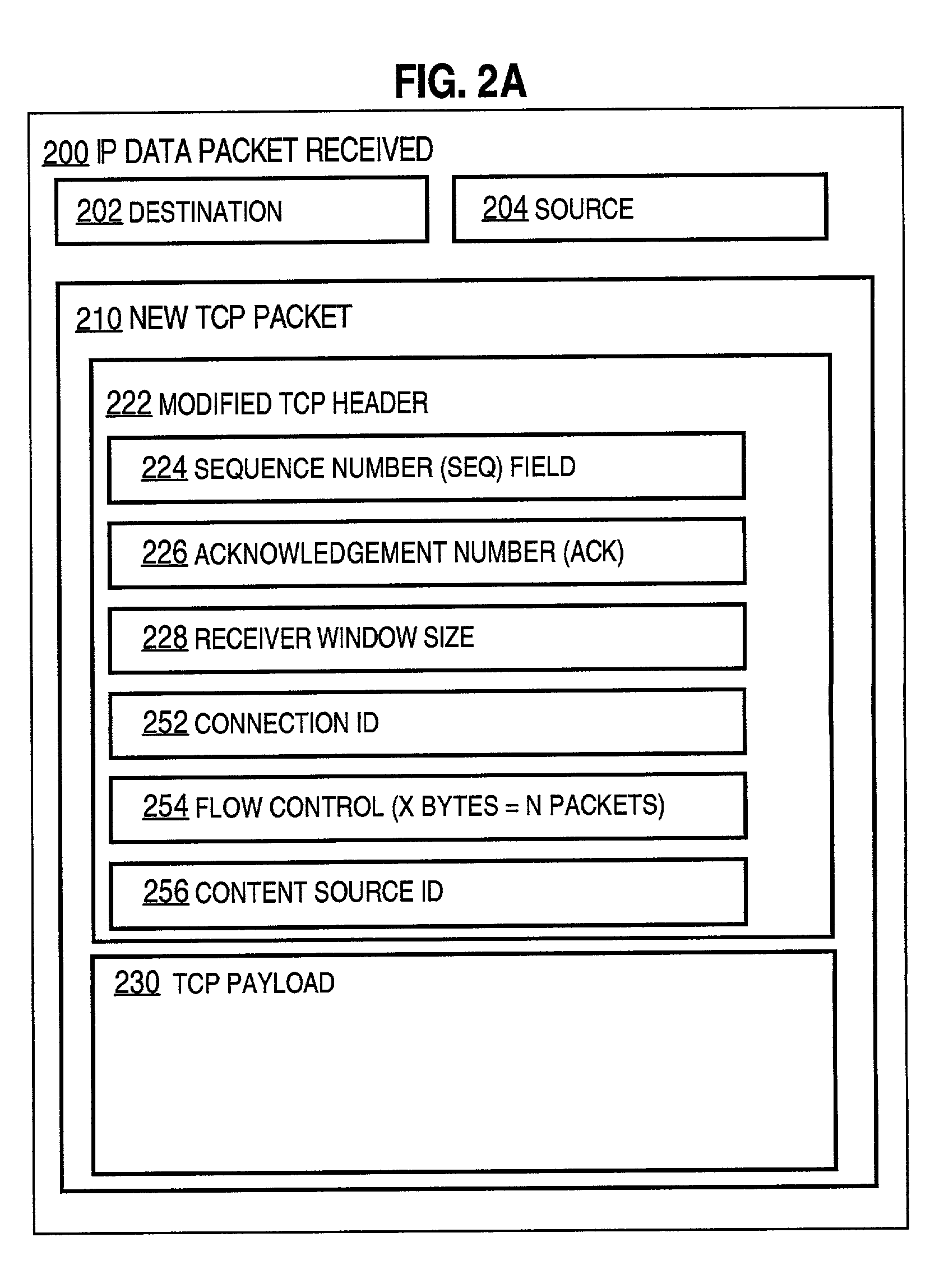Method and apparatus for client-side flow control in a transport protocol
a client-side and transport protocol technology, applied in the field of network transport protocols, can solve the problems of reducing the computational load of the server device to determine the flow control of tcp, limiting server performance, and affecting the performance of the server, so as to reduce the computational load of the server devi
- Summary
- Abstract
- Description
- Claims
- Application Information
AI Technical Summary
Benefits of technology
Problems solved by technology
Method used
Image
Examples
embodiment 300
[0088]FIG. 3 is a flowchart that illustrates a high level overview of one embodiment 300 of a method executed on a client device for providing reliable transport with a stateless transport layer process on a server device. For example, the steps of embodiment 300 are performed by the new TCP receiver process 121 on client device 130 for client 131 to obtain multiple data packets of content from a stateless new TCP transmitter process 111 on host 142 for server 141. Although steps are illustrated in FIG. 3 and following flowcharts in a particular order, in other embodiments the steps can be performed in a different order, or overlapping in time.
[0089]For purposes of illustration, the description herein assumes that Table 1 lists the values selected and data packets that are sent, for an example with no lost data packets. Also for purposes of illustration, the description herein assumes that Table 2 lists the values selected and data packets that are sent for an example with one lost ...
embodiment 400
[0143]FIG. 4 is a flowchart that illustrates a high level overview of embodiment 400 of a method executed by a stateless transport layer process on a server device for providing reliable transport with a client device. The operation of method 400 is illustrated with the example of Table 1. The performance of the method 400 does not depend on network considerations, such as lost data packets or detecting network congestion.
[0144]In step 402, the stateless new TCP transmitter 111 on the server side receives the first data packet 261 with an arbitrary SEQ_C1 value in the SEQ field 224 and an arbitrary value ACK_C1 in the ACK field 226. The value ACK_C1 is ignored. For example, as shown in Table 1, the first data packet includes SEQ_C1=1111 and ACK_C1=0. This data packet is recognized as a first step in the three-way handshake to establish a connection by the SYN bit of the conventional TCP header.
[0145]In step 404, the transmitter 111 sets the value ACK_S2 for the second data packet by...
PUM
 Login to View More
Login to View More Abstract
Description
Claims
Application Information
 Login to View More
Login to View More - R&D
- Intellectual Property
- Life Sciences
- Materials
- Tech Scout
- Unparalleled Data Quality
- Higher Quality Content
- 60% Fewer Hallucinations
Browse by: Latest US Patents, China's latest patents, Technical Efficacy Thesaurus, Application Domain, Technology Topic, Popular Technical Reports.
© 2025 PatSnap. All rights reserved.Legal|Privacy policy|Modern Slavery Act Transparency Statement|Sitemap|About US| Contact US: help@patsnap.com



